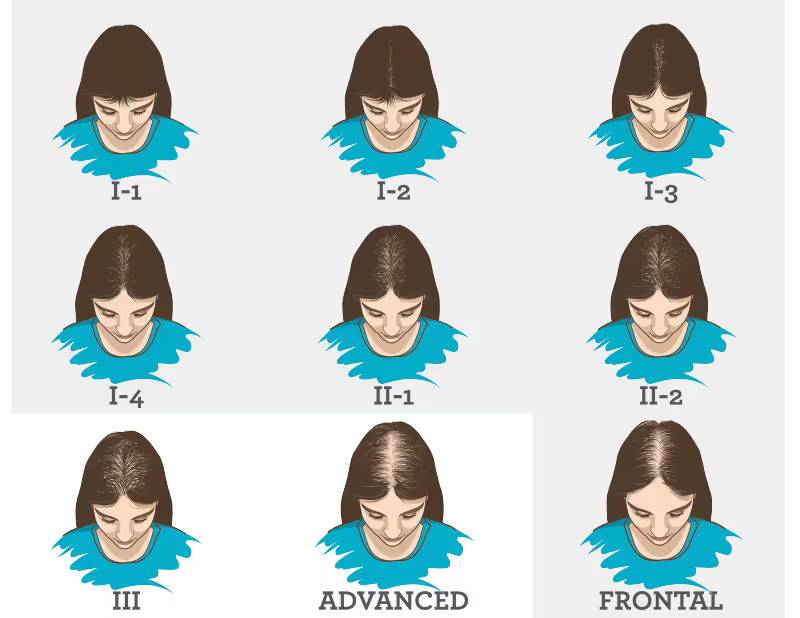
Key Points
- The article highlights the physical side effects of stopping breastfeeding.
- Hormonal shifts cause these common symptoms.
- Physical side effects of weaning may involve breast discomfort, headaches, fatigue, appetite changes, and mood swings.
- Babies might face increased infection risk, bowel movement changes, and temporary discomfort.
- Effective weaning management requires a gradual approach, proper self-care, and support.
Breastfeeding is such a beautiful journey, isn’t it? It creates a special bond between you and your baby filled with love and connection. It’s a time filled with love, nourishment, and deep connection. But, when it’s time to wean, it can be quite an emotional and physical transition for both of you. While the emotional ups and downs of weaning deserve their own spotlight, today we’re going to focus on the weaning effects and weaning symptoms you might experience when you stop breastfeeding
Understanding the Weaning Effects for Hormonal Shift
When you breastfeed, your body releases two key hormones – prolactin and oxytocin. Prolactin is what helps produce milk, and oxytocin plays a big role in letting the milk down and making you feel calm and bonded with your baby. As you start breastfeeding less, your body naturally produces less of these hormones. This hormonal shift is the main reason behind most weaning symptoms and physical side effects of stopping breastfeeding too soon.
Common Physical Side Effects of Stopping Breastfeeding
Let’s dive into the specific weaning symptoms you might encounter:
1. Breast Engorgement and Discomfort
When your milk production doesn’t match the amount being removed, your breasts can become very full and uncomfortable. This is more likely if you wean suddenly or don’t properly wean one side before the other. You might feel your breasts becoming firm, tender, and heavy.
What to do: Apply warm compresses and gently massage your breasts to promote milk flow. You can also express a small amount of milk for comfort, but avoid completely emptying your breasts as this can signal your body to produce more milk.
2. Clogged Ducts and Mastitis
Sometimes, milk ducts can get blocked by fatty deposits, leading to a tender lump and possibly a red, warm area on your breast. This is a clogged duct. If not treated, a clogged duct can lead to mastitis, a breast infection that comes with fever, chills, and flu-like symptoms.
What to do: Regularly massage the affected area and apply warm compresses. If you suspect mastitis, seek medical attention immediately for proper treatment.
3. Leakage
As your body adjusts to making less milk, you might notice some milk leakage, especially in the first few days after you start weaning. This is totally normal and can be managed with nursing pads.

What to do: Wear nursing pads to absorb any leaks and change them frequently to stay dry and comfortable.
4. Headaches and Fatigue
The hormonal changes during weaning can sometimes trigger headaches and fatigue. Making sure you get enough rest, stay hydrated, and manage your stress levels can help with these symptoms.
What to do: Drink plenty of water, rest as much as you can, and consider light exercise to boost your energy levels.
5. Changes in Appetite and Metabolism
Breastfeeding burns extra calories, so when you stop, your metabolism might slow down a bit. You might notice changes in your eating habits, which can lead to weight fluctuations. Eating a healthy diet and keeping active are key to feeling good during this time.
What to do: Focus on balanced meals and regular physical activity. Listen to your body’s hunger cues and adjust your food intake accordingly.
6. Mood Swings and Depression
The drop in prolactin can lead to mood swings and even feelings of depression for some mothers. These emotional changes are usually temporary and will resolve as your hormones balance out. It’s important to talk openly with your partner and support system to navigate these feelings.
What to do: Communicate with loved ones about how you’re feeling, seek support from friends or a counselor, and practice self-care activities that make you happy.
7. Changes in Menstrual Cycle
Breastfeeding often delays the return of your period. After weaning, your period might come back within a few weeks or even months, depending on your individual cycle. Initially, you might experience heavier periods or more noticeable PMS symptoms.
What to do: Track your cycle and be prepared with menstrual products. Consult your doctor if you have concerns about any changes.
8. Skin and Hair Changes
Hormonal shifts can also affect your skin and hair. Some mothers might experience dryness, acne breakouts, or temporary hair loss. These issues usually resolve within a few months.

What to do: Maintain a good skincare and haircare routine. Use gentle products and consider speaking with a dermatologist if issues persist.
Effects on the Baby
While we’re focusing on the mother, it’s important to mention that weaning can also have some physical effects on your baby:
9. Increased Risk of Infection
Breast milk is full of antibodies that help protect your baby from infections. As they transition away from breast milk, they might be more prone to minor illnesses like ear infections or colds.
What to do: Ensure your baby gets plenty of rest, maintains a balanced diet, and consult your pediatrician if they show signs of illness.
10. Changes in Bowel Movements
Breastfed babies usually have softer and more frequent bowel movements. When they switch to formula or solids, their stools might become less frequent and firmer. This is normal unless your baby has constipation or diarrhea.
What to do: Monitor your baby’s bowel movements and consult your pediatrician if you notice any persistent issues.
11. Temporary Discomfort
Some babies might be fussy or have a hard time adjusting to the taste and texture of formula or new foods at first. This usually doesn’t last long as they get used to the changes.
What to do: Introduce new foods gradually and offer comfort and reassurance to help your baby adjust.

Tips for Managing Physical Side Effects
Most weaning-related side effects are temporary and manageable with a few simple strategies:
Gradual Weaning: The best way to minimize weaning symptoms and side effects is to wean gradually. This gives your body time to adjust to producing less milk. Talk to your pediatrician for advice on creating a weaning plan that works for you.
Comfort Measures for Breast Engorgement: Apply warm compresses and gentle massages to help with milk flow. Express a small amount of milk for comfort, but avoid completely emptying your breasts.
Pain Relief for Discomfort: Over-the-counter pain relievers like acetaminophen or ibuprofen can help with soreness and discomfort.
Maintaining Good Hygiene: Keep good breast hygiene to prevent clogged ducts and infections. Wear clean bras, change nursing pads regularly, and shower daily.
Prioritize Rest and Self-Care: Adequate sleep is crucial for recovery and managing stress. Delegate household tasks if you can and make time for activities you enjoy.
Healthy Eating: Focus on a balanced diet that nourishes your body. Your dietary needs might change after weaning, so listen to your body and adjust your intake as needed.
Stay Hydrated: Drinking plenty of water helps with milk flow and overall well-being.
Seek Support: Don’t hesitate to ask for help from your doctor, a lactation consultant, or a trusted friend or family member if you’re experiencing significant discomfort or emotional challenges during weaning.
Addressing Specific Concerns
Here are some additional points to address specific concerns mothers might have:
What if I experience mastitis? If you think you have mastitis, it’s important to seek medical attention right away. Early diagnosis and treatment with antibiotics will help prevent complications.
Is it safe to wean if I’m sick? Generally, it’s safe to wean even if you’re not feeling well, but it’s always best to check with your doctor if you have any concerns. You can read for more detail: Breastfeeding While Mom is Sick Is Safe? Safety Tips for Every Mom
Can I still donate breast milk after weaning? This depends on the guidelines of the milk bank or donation program. Typically, you need to have some milk production to continue donating.
How long will these weaning effects last? The duration of side effects varies for each individual and the weaning process. Most symptoms usually resolve within a few days or weeks. However, if any side effects persist or worsen, it’s important to consult your doctor.
Conclusion
Weaning is a natural and important milestone in your motherhood journey. While you might experience some weaning symptoms and physical side effects as your body adjusts, these are temporary and manageable. By understanding the hormonal changes at play and practicing self-care, you can navigate this transition with confidence. The most important thing is the well-being of both you and your baby. Listen to your body, prioritize your emotional well-being, and embrace the new chapter that awaits!
Sources
- After weaning – what next? – https://laleche.org.uk/after-weaning-what-next/
- Post-Weaning Depression Is a Thing, And It’s Time We Start Talking About It – https://www.parents.com/baby/breastfeeding/weaning/post-weaning-depression-is-a-thing-and-its-time-we-start-talking-about-it/
- What Happens To Your Body When You Stop Breastfeeding? – https://blog.getcubo.com/what-happens-to-your-body-when-you-stop-breastfeeding/
- How Will My Body Change After Weaning My Baby? – https://www.medela.com/en-au/breastfeeding-pumping/blog/breastfeeding-tips/how-will-my-body-change-after-weaning-my-baby

Hi, I’m Lindley! I’m a stay-at-home-mom sharing all of the tips and tricks I learn throughout my motherhood journey. I’m now navigating through wife life and being a mom while blogging my crazy adventures. I’m so glad to have you along for the ride!



